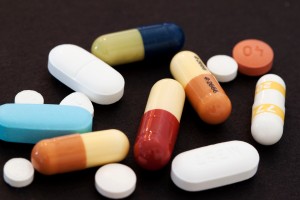
image courtesy of Laura Gilmore via flickr
The process of drug research, development, approval, and distribution is slow moving. To a healthy individual this of course makes logical sense because staying healthy requires it. For individuals suffering from yet incurable illness, disease, virus, or disorder, and those who know and love them, this process is a race against health and hope.
According to TED Blog, effective drugs only exist for 6% of the 4,000 diseases with known molecular causes. To make more of researched data, in 2012, the US National Center for Advancing Translational Sciences created two crowdsourcing tools directly connecting researchers and drug manufacturers. Contributing pharmaceutical companies release their data on drug compounds that they researched but, in the end, did not utilized (source).
Researchers benefit from access to expensive and time consuming research already conducted. “Some perspective: While it can take up to 15 years and $1 billion to bring a new drug to market, according to some estimates, more than 90% of drugs fail to make it past the early development and toxicity testing stages of the drug pipeline” (source). Pharmaceutical companies benefit by staying at the cutting edge of health innovation, while creating connections with new researchers, but without investing funds, only unused resources.
The drugs being repositioned have already passed initial testing stages, meaning they are safe, but were found to be ineffective for their intended purpose, or were moved out of the research and production schedule. The successful 2012 endeavor culminated in the NIH awarding $12.7 of funding to academic research groups which found compounds and potential new treatments. They are currently gearing up for a second round of open innovation drug repositioning (source).
Finding new uses for compounds researched yet de-prioritized by larger pharmaceutical companies is innovative. But the largest value created by this NIH program is in connecting the larger community of drug researchers, developers, and producers. Download this white paper to see more ways that the larger crowd, including patients and providers, is being leveraged to further health care innovation. The sharing of data will only help to short cut the process of getting these innovations into the hands of those who need them most.

You must be logged in to post a comment.